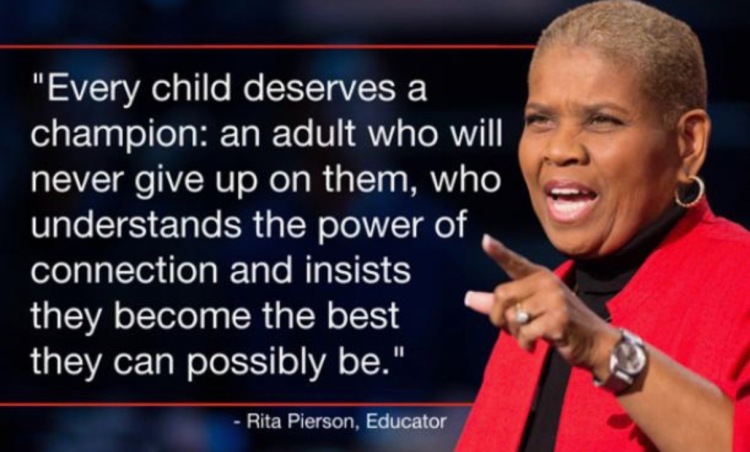WHY?
Many studies confirm that secure attachment, the foundation of socioemotional wellbeing, is associated with higher grades and standardised scores compared to insecure attachment. Secure attachment is also associated with greater emotional regulation, social skills and willingness to accept challenges. (e.g. Bergin & Bergin, 2009) Because these effects tend to be greater for high-risk pupils, any closing the gaps strategy must include enhanced teacher-pupil relationships – or school bonding (See How, below) – as a critical component. When this focus is missing, it is high risk pupils who have the most to lose.
This applies across all phases of compulsory education. Whilst attachment needs are easy to observe and understand in young children, for example toddlers visibly distressed by the departure of an attachment figure (AF), adolescent insecurity of this kind is much more likely to be dismissed as simple non-compliance, or attibuted to raging hormones. (How many issues might that one mask?) For this reason, the underlying need – very evident in the toddler and understood by practitioners who endeavour to create security – is missed. Subsequently, none of the appropriate support is provided, but rather punishment.
Blurring the issue further is the widely known fact that the work of adolescence is to achieve autonomy – so surely teenagers need AFs less. In fact, nothing could be further from the truth – self-reliance and independence stem from feelings of security; the availablity of an AF, physically present, open to communication, responsive to needs. Indeed, confidence in the availability of AFs has been described as the bedrock of healthy adolescent personality. (Bretherton, 1999)
It is estimated that between a third and half of children lack such a bedrock, to a greater or lesser extent, so attachment difficulties are common in the classroom. This is of course where relationships with warm, sensitive, respectful teachers become a potential game-changer. In one study, adolescents who reported attachment-like relationships with their teachers were less likely to use drugs and alcohol, engage in violence, attempt suicide, or become sexually active at an early age. (Resnick et al, 1997) Teachers can and do function as surrogate AFs.
The problem is that most of the time they don’t attach to those pupils most in need of this support – because unfortunately the behaviour of insecure teenagers elicits responses in teachers that make it difficult to attach to them. Research suggests that teachers tend to interact with insecure pupils in a contolling manner, using many directives, in contrast with interactions with the securely attached, which are characterised by greater warmth, respect, an expectation of compliance and higher expectations.
Clearly, therefore, an evidence-based strategic effort is required if we are within our schools to deliberately disconfirm the internal working model of insecure pupils – that adults are hostile, rejecting or unresponsive. It is vital work that can’t be left to chance, because the chances are, it won’t happen, and insecurely attached pupils will continue to populate our isolation rooms, or make up the ranks in our PRUs, firmly entrenching their disadvantage.
To be sure, meeting attachment needs presents greater challenges in the secondary setting. There’s a sense in which “secondary schools are not designed for belongingness.” Bergin & Bergin et al (1993) found that teacher-pupil relationships were less personal and positive in Y7 compared with Y6. Secondary teachers saw pupils as less trustworthy, compared with their primary counterparts just a year earlier, and pupils rated their teachers as less friendly. Of course, relationships take longer to etablish in secondary school, because pupils encounter many more teachers and this itself creates a degree of insecurity. Another problem is the notion, again confirmed by reasearch, that with age, school connectedness erodes.
This is not inevitable, however – international comparisons demonstrate that negativity about school and adolescence need not go hand in hand. Whether pupils bond to their secondary school – and experience enhanced wellbeing as a direct result of that – depends to a large extent on the success of leaders in creating opportunities for meeting attachment needs; in putting relationship-building front and centre.
HOW?
School bonding refers to a sense of belonging in school and having a network of relationships with peers and teachers. It can make pupils feel secure and valued, like attachment, which can in turn liberate them to take on academic and social challenges. A pupil bonded to school has a sense that ‘people like me’ whereas one who is not will feel lonely, outcast and alienated.
In secondary schools, we know that how pupils feel about their school is largely determined by the quality of the relationship they have with their teachers in specific classes. (Osterman, 2000) If pupils perceive their teachers are supportive and caring, they have greater engagement in school, which is related of course to achievement.
Teachers need to learn how to engage constructively with insecurely attached, floundering adolescents. It’s a huge challenge not to act in ways that confirm internal working models, but there can be fewer greater rewards than making a difference of such life-changing potential. In this, the work of the educator involves:
- understanding child development and through this responding sensitively and non-judgementally to behaviours
- providing choice whereever possible
- avoiding coercive discipline: adolescents are more likely to feel school bonding if their school does not have harsh a discipline policy, such as classroom removal for relatively minor infractions (McNeeley, 2002) Effective discipline is best achieved by keeping the tone positive and respectful and by using the least possible power
- helping pupils become more pro-social by providing them with opportunities to help each other. Noticing and praising their kindness
- intervening to repair specific, difficult relationships – e.g. for 5-15 minutes a day, a teacher or TA giving a pupil undivided attention, following the lead in whatever activity the has been chosen, conveying acceptance, interest and safety
Participation in extra-curricular activities is another important feature of school bonding. Secondary school pupils feel more connected when there is a high rate of participation in such activities, in addition to a positive classroom climate. Mahoney and Carins found that the least competent pupils benefitted the most, even though their involvement was often just in a single activity.
Pupils are more likely to feel bonded to small schools. In one study, the optimal size was about 300. Larger secondaries should endeavour to mimic the positive effects of smaller schools by creating ‘school within a school’ structures, such as House systems, teams etc.
Attachment takes time to develop and requires that pupils and teachers stay together long enough to form relationships. This might not happen until the end of an academic year, when relationships are typically disrupted. Relationship continuity should be planned for vulnerable pupils, as much as possible. They need to feel safe in their relationships with teachers they know and trust – able to admit confusion, errors, even a dislike of the subject matter. (Of course, teachers are more attracted to pupils who share their passion for a topic, but all pupils, even those with interests different from the teacher’s, must be valued and cared for.) Key-worker and mentoring schemes are also helpful, with one atuned, available adult offering unconditional positive regard enough to provide that all-important safe base.
These few recommendations are low cost because they simply require improved relationships with children, rather than new curriculum or infrastructure. Furthermore, wellbeing is linked to achievement and wellbeing is enhanced through secure pupil-teacher relationships. So this is about standards too, soft and fluffy as it may sound. With the benefits most marked within high-risk groups, currently falling further behind their more advantaged peers, it is beyond time we focussed properly on this crucial work, beginning by reviewing our traditional behaviour policies.


One thought on “How & why we must meet the attachment needs of adolescents in school.”